Mysłowice 2022-01-07
Mysłowice railway station.
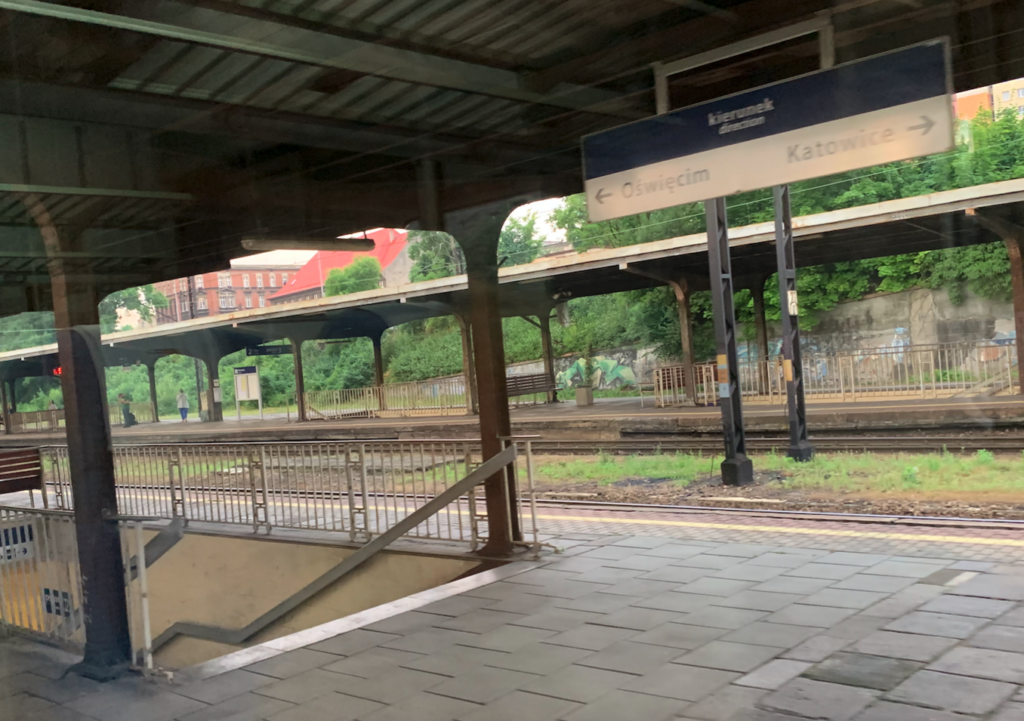
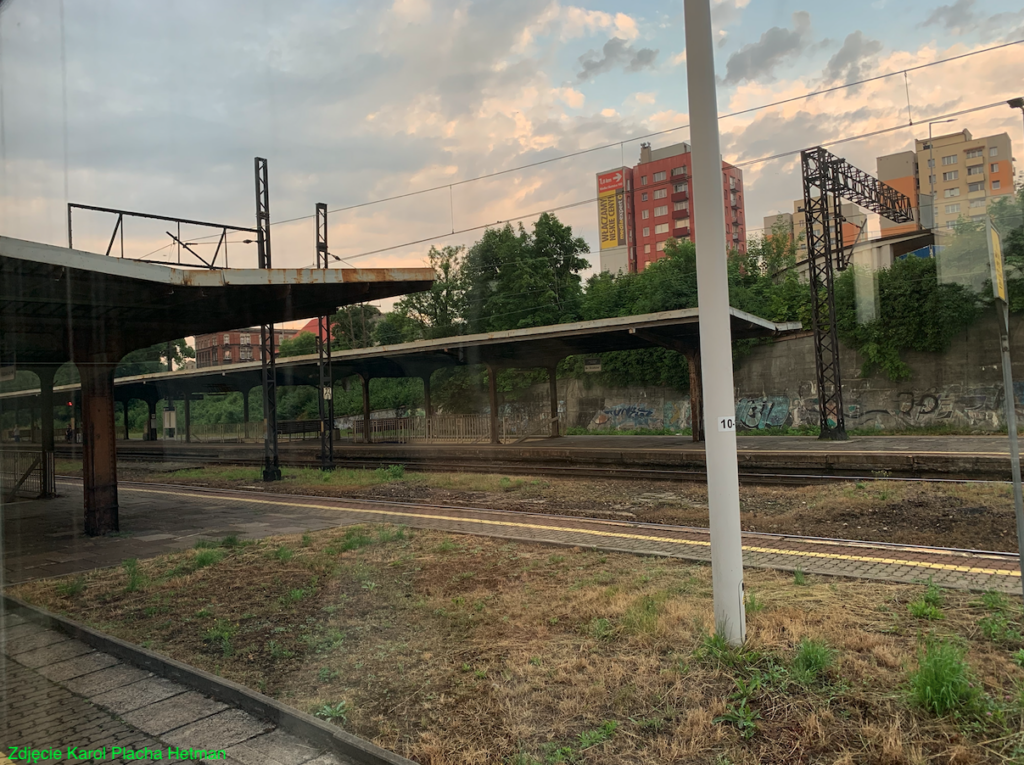
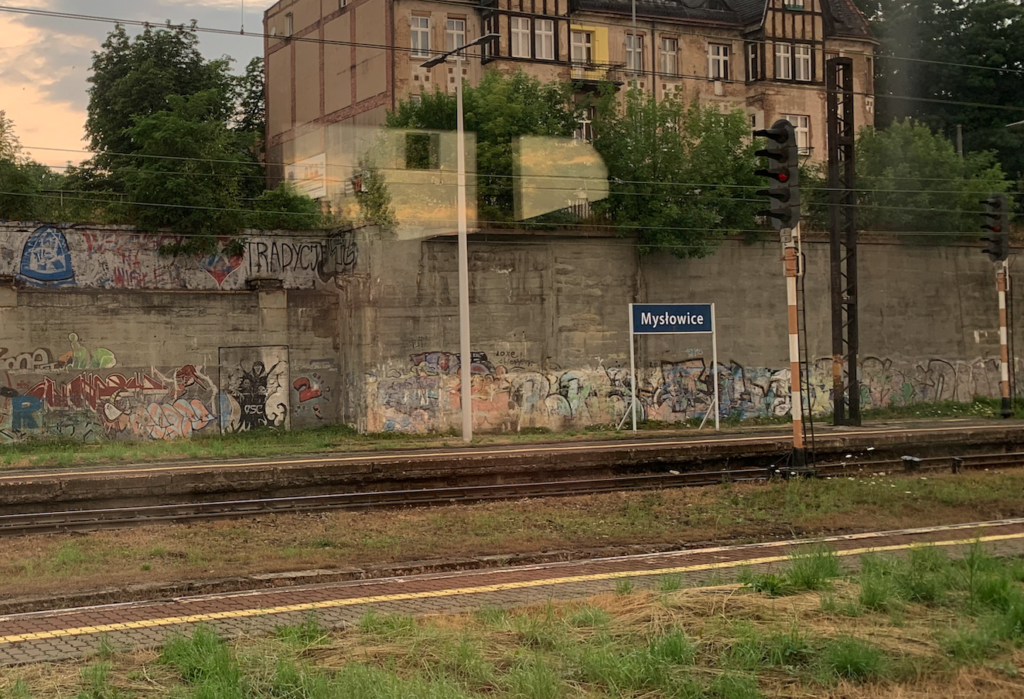
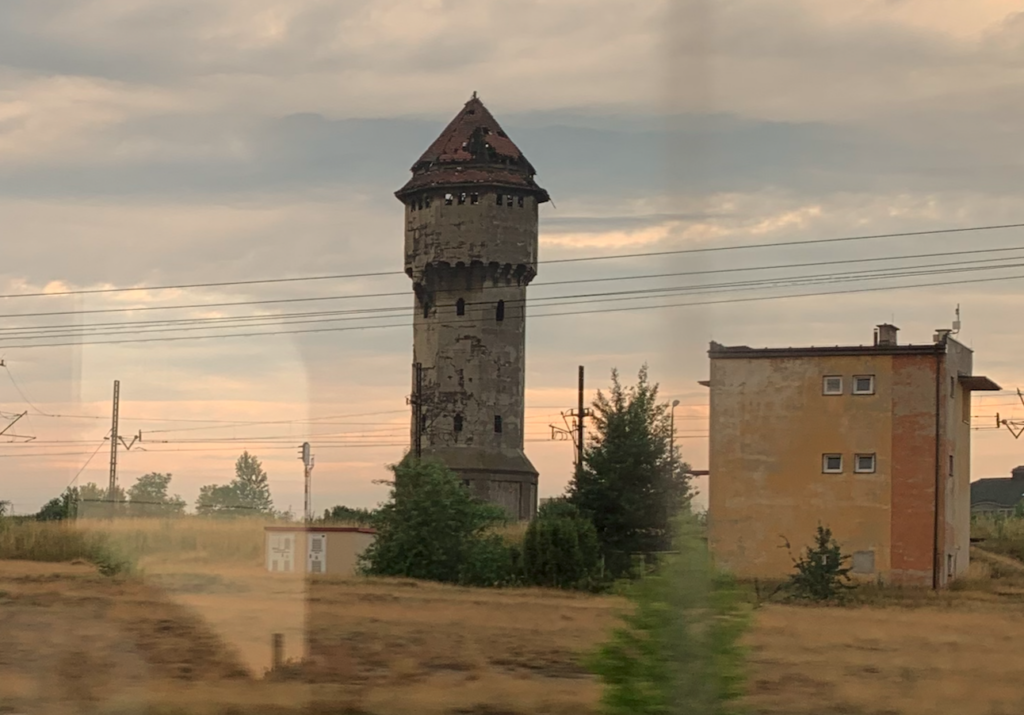
Description of the photo: Near the Mysłowice railway station there is a water tower of the former Huta Uthemann.
Mysłowice railway station.
In 1836, on the initiative of industrialists and merchants, the Upper Silesian Railway Society (TKG) was established. The main goal of TKG was to connect Upper Silesia with Wrocław by a railway line. In 1841, the company Oberschlesische Eisenbahn Aktien Gesellschaft was established, which in the following years built a standard-gauge railway from Wrocław to Mysłowice. The individual sections of the railway were built in different places and only in the final one line was created.
In 1846, the railway was brought to Mysłowice. A further goal was to connect Upper Silesia with Krakow, thus overtaking the Austrians in this investment and reaping financial benefits from the transport. The main commodities were hard coal, iron products and the benefits of relatively cheap rail transport. Almost all railway lines were built by private companies, which received numerous legal facilities that appeared in the Kingdom of Prussia. Among other things, there were facilitations in the purchase of land for railway lines and numerous tax breaks. The government of the Kingdom of Prussia strongly supported the development of rail transport.
The railway transport of troops and supplies for him appeared a little later, because initially the army saw the threat that the enemy might launch a quick surprise attack. The military demanded that railway lines bypass important military facilities. This view was strongly represented by Russia. The nationalization of railways in Prussia caused the army to become interested in this type of transport.
Works on the line Wrocław – Mysłowice (a border town of the Kingdom of Prussia) and at the same time in Mysłowice started in 1842. On October 1, 1946, the railway station in Mysłowice was officially opened and the inhabitants saw the first train. The King of Prussia, Frederick William IV, was present at the ceremony. The station was final and had only two tracks and a turntable for steam locomotives. At that time, the station was called Myslowitz, but the names Mysłowice Główna and Mysłowice Miasto were also used.
On the other side of the border, in Galicia (Austrian partition), the railway was built by the Kraków-Upper Silesia company. In October 1847, the two lines were merged. As a result, it was possible to cross the entire line from Kraków to Wrocław. Communication between the stations was provided by a telegraph and riding on the so-called scepter.
The Prussian authorities tried to build a railway line from Mysłowice to Sosnowiec, Zawiercie and other towns. But Russia was not interested in this plan, suspecting a trick. In 1856, a railway line from Mysłowice to Oświęcim was built. Mysłowice was developing, but other regions of Upper Silesia were developing even more dynamically, including the newly established Katowice.
Mysłowice became a tourist place where people would come to see where the borders of three powerful empires meet: Prussian, Austro-Hungarian and Russian. For Poles, they were only the invaders.
Mysłowice has also become an important center for emigrants. People who wanted to emigrate from Galicia and the Kingdom of Poland to America came to Mysłowice. In Mysłowice, the Germans organized an immigration office which issued special documents. Emigrants bought train tickets from Mysłowice via Gliwice, Wrocław, Berlin to Hamburg. In Hamburg, emigrants switched to ocean-going ships and headed for America.
Mysłowice station now.
The Mysłowice railway station has the coordinates 50.238102 N 19.141573 E. It is located in the eastern part of the city of Mysłowice, near the Przemsza River. Due to the area with a slope towards the Przemsza river, the station level had to be leveled. The station was built on the eastern side of the station, at today’s Powstańców street. From the moment the station was built, horse-drawn trams arrived at the square in front of the station. On the western side of the station there is the Oświęcimska road (provincial road No. 934), from where you can also walk to the station. There are bus stops, a TAXI stop and shops here. Oświęcimska Street and Powstańców Street are connected by a tunnel for travelers and residents. From this tunnel there is access to every platform in the station. There is one more tunnel under the platforms and tracks at the station, which was a service and postal tunnel, but it has been decommissioned. There is a retaining wall between Oświęcimska Street and the station’s plane, due to the difference in height in the area.
There are three railway lines at the Mysłowice station: No. 134 (previously No. 139 and No. 100) Jaworzno Szczakowa – Mysłowice, No. 138 (previously No. 201d and No. 149) Oświęcim – Katowice, No. 655 (previously No. 201i, then No. 149) Mysłowice – Katowice Muchowiec. All routes are double-track and electrified.
The passenger station has three platforms with five tracks (five platform edges) and 3 through tracks used by freight trains. Platform 1 is unused and is 290 m long. Platforms 2 and 3 are 240 m long. All platforms are of low type. The platforms are covered with shelters. The surface of the platforms is lined with paving tiles. In the 70s / 80s, Platform 1 was used for colony and seasonal trains during the holiday season, connections to the sea.
The Mysłowice station is divided into two stations; passenger station and cargo station. The goods station is located in the north-west direction and is located between Katowicka Streets, on the western side (national road No. 79) and Towarowa Street, on the eastern side. The freight station had 18 tracks (14 main tracks), but many of them are now unused or even dismantled.
There is an overpass between the goods and passenger stations along Krakowska Street (national road No. 79), which runs under the tracks. There are six tracks on the viaduct. In the northern head of the station there is an overpass along Bytomska Street. The street runs under six lanes.
There are many railway facilities at the freight station, many of which no longer fulfill their original functions. Among other things, a depot with two buildings. In the first, there were 5 stations, and in the second, there were 3 stations for locomotives. There was also a turntable for locomotives. There are 2 humps in here. In the former railway buildings there are now: car tire service, automotive shop, household appliances repair shop, furniture shop, car repair shop and others. The second fan-shaped locomotive is located at the passenger station on its eastern side. There were 18 stands and a locomotive turntable. The depot is closed.
In 2016, the Mysłowice passenger station was renovated. The elevation of the station was renovated. The underground passage was renovated. Platform 2 and Platform 3 have been renovated. Platform 1 has not been used for many years. Platform edges and benches have been improved. A new sound system, new showcases with railway information, new LED clocks were installed on the platforms.
The station has 3 active control rooms (MwA, MwB and Mw11). Currently, train traffic is carried out by 2 control rooms with: MwA (in the passenger section and the southern part of the cargo group) and MwB (exit at Zawodzie and Stawiska). The Mw11 control room cooperates with the MwA control room, which is located on the turnout head from the Language side. In 2018, the station served up to 200 passengers per day. All passenger trains stop in Mysłowice: InterCity, PolRegio, TLK, and Koleje Śląskie.
Railway station building.
The building of the station is historical and typical of the Prussian railways. The station facility is in good condition. The building is very simple in form. Only its extreme parts were raised and received gable roofs with a slight slope. The central part of the building is covered with a flat roof. Currently, there are shops and service points in the building. There are no ticket offices, but there are ticket machines at the station. The ticket office closed on March 29, 2012.
Narrow-gauge railway in Mysłowice.
The narrow-gauge railway in Mysłowice was developing in parallel with the standard-gauge railway. The construction of the narrow-gauge lines was initiated mainly by the owners of mines and steel mills. The main reason was the low efficiency of vectored companies, so called from the Latin word “vectur”, meaning “carrier”, who transported goods by horse-drawn platform carts on dirt roads. The rails made transport much more efficient, because the weather and the seasons of the year had less impact on transport. Many of the narrow gauge lines were manned by horse drawn carriages before the introduction of steam locomotives for the narrow gauge track.
The standard gauge railway did not solve the problem of the exchange of raw materials and goods between individual workplaces. The narrow gauge railway had several advantages. The construction of the narrow-gauge railway was cheaper, tighter turns could be used. The minimum turning radius is 40 m. Such railroads can climb up to 25% of terrain slopes. Under certain conditions, the wagon could be turned on the turntable by one worker. This made it possible to bring such a line practically anywhere. According to estimates, the 10 km long narrow-gauge trail replaced the work of 100 horse carriages. The cost of transportation decreased by 50 – 60%.
For these reasons, Upper Silesia is covered with a narrow-gauge railway network. Its construction was carried out by the Upper Silesian Railway Society, the same that built the standard-gauge railway. The main narrow-gauge lines were serviced by steam locomotives, and side horse-drawn carriages. In Upper Silesia, there were attempts to transport workers and residents on narrow-gauge lines. But the effect was weak. Trams, which ran faster and more frequently, were better suited to transporting people.
In 1857, the Kingdom of Prussia took over the management of the Upper Silesian Railway Society and thus became the owner of the Upper Silesian Narrow Gauge Railway.
Written by Karol Placha Hetman
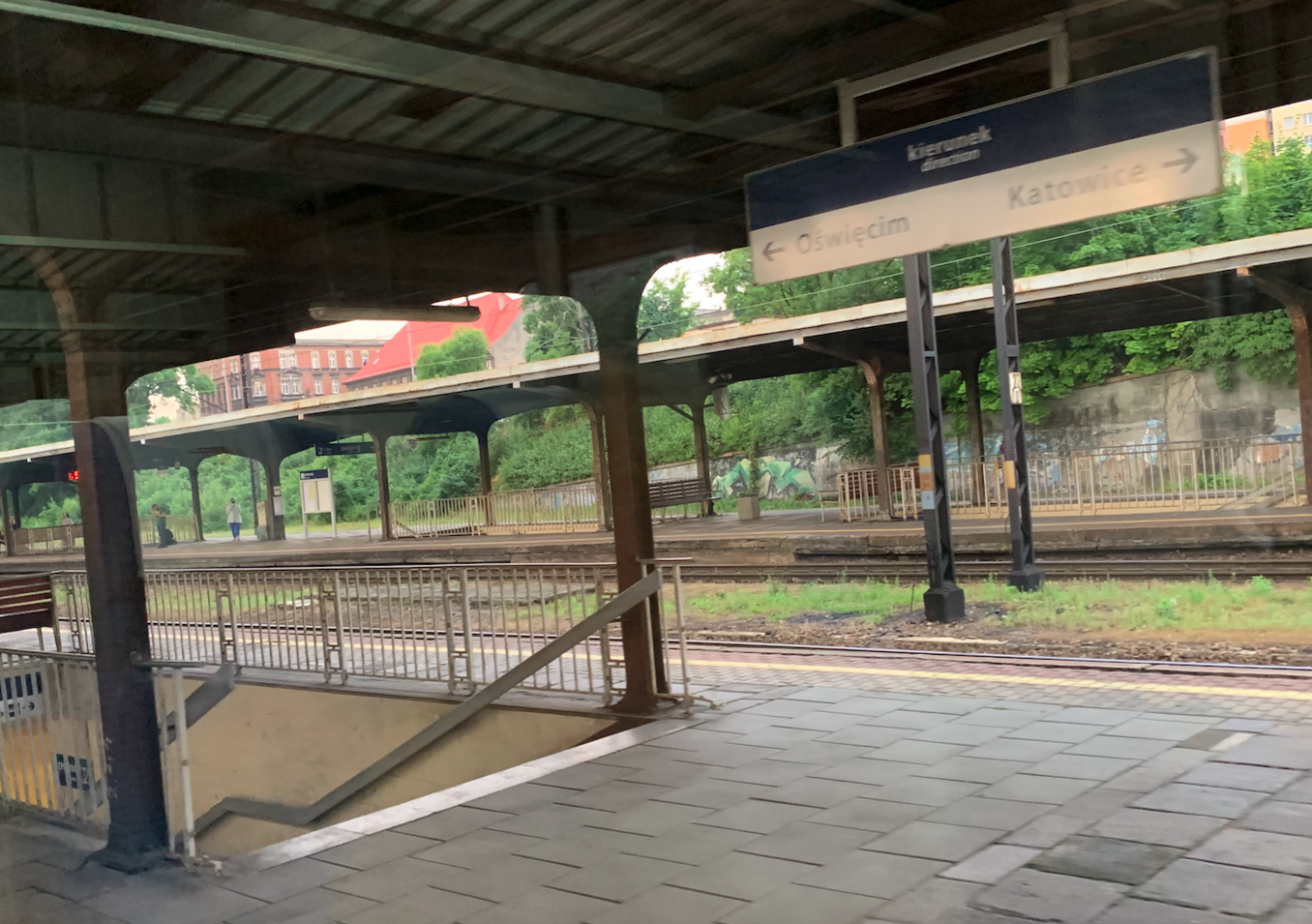
Leave a Reply
You must be logged in to post a comment.